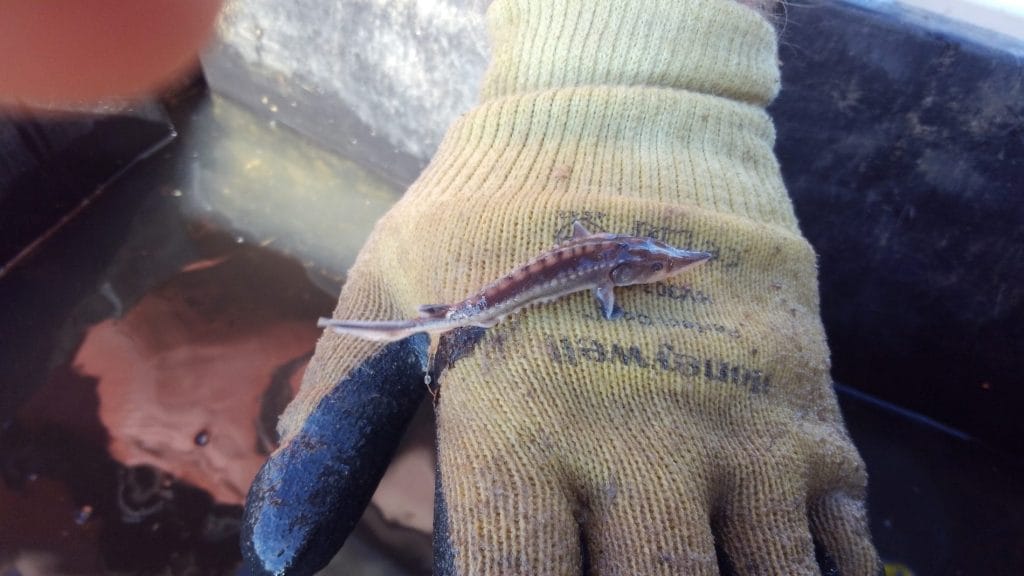Researcher finds rare fish in the James River

Baby Atlantic sturgeon have been scarce in the James River for the last 10 years. Photo courtesy of Matthew Balazik
Walter Chidozie Anyanwu, Contributing Writer
Matt Balazik, along with his colleagues at the Rice Rivers Center, has been trawling the James River for years trying to find traces of the Atlantic sturgeon, a species of fish that was declared endangered in 2012.
The researchers were working on this project for eight years before they began making progress last fall with the discovery of baby sturgeon in the James River — significant because of their scarcity.
“We had no idea what we were doing, but we went out with some other researchers to see if we could catch them. That was back it 2007,” Balazik said. “Through persistence and effort, we got pretty good at catching them. We were catching plenty of adults, but the important thing was to catch the young ones — the babies.”
The Rice Rivers Center, owned and operated by VCU and located along the James River, is dedicated to environmental research and is leading the Virginia Sturgeon Restoration Team’s effort to reestablish the sturgeon population in Virginia. It receives funding from the Virginia Department of Game and Inland Fisheries and the National Oceanic and Atmospheric Administration.
Initially, the researchers noticed the robust adult sturgeon population in the James River. In the last 10 years, however, there have been few young sturgeon reported in their findings.
“It’s been scary how few young ones we’ve been finding. It’s great to have an adult population spawning, but if they’re not having success it doesn’t matter,” Balazik said. “Because we need new young fish to take the place of the older fish as they die.”
Every river population has completely different spawning patterns, and Balazik thinks some answers to the shortage of young sturgeon can be found by looking closely at these patterns. The patterns are affected a lot by the river’s flow. More flow leads to a greater chance of successful spawning.
The James River has had a particularly successful spawning season this year, and Balazik attributes that to the river’s high flow.
“That’s the way it naturally is in the James. You have a few [fish] that survive during the normal flow year, but then we have a really strong run, a really wet year,” Balazik said. “Then there’s a population boom. It’ll really bump up the future population.”
While there isn’t enough data to back up this claim, Balazik said there are a lot of factors connecting high river flow with successful spawning. For one thing, the water level’s rise allows the sturgeon to reach their spawning habitats and clean them out more easily. The sturgeons need clean, solid substrate to spawn. Their eggs are very sticky and dense, so if there’s a lot of sediment, it will build on the eggs and suffocate them.
“We’re very ignorant [right now], and we’re just learning as we go,” Balazik said. “We’re in uncharted territory right now.”



